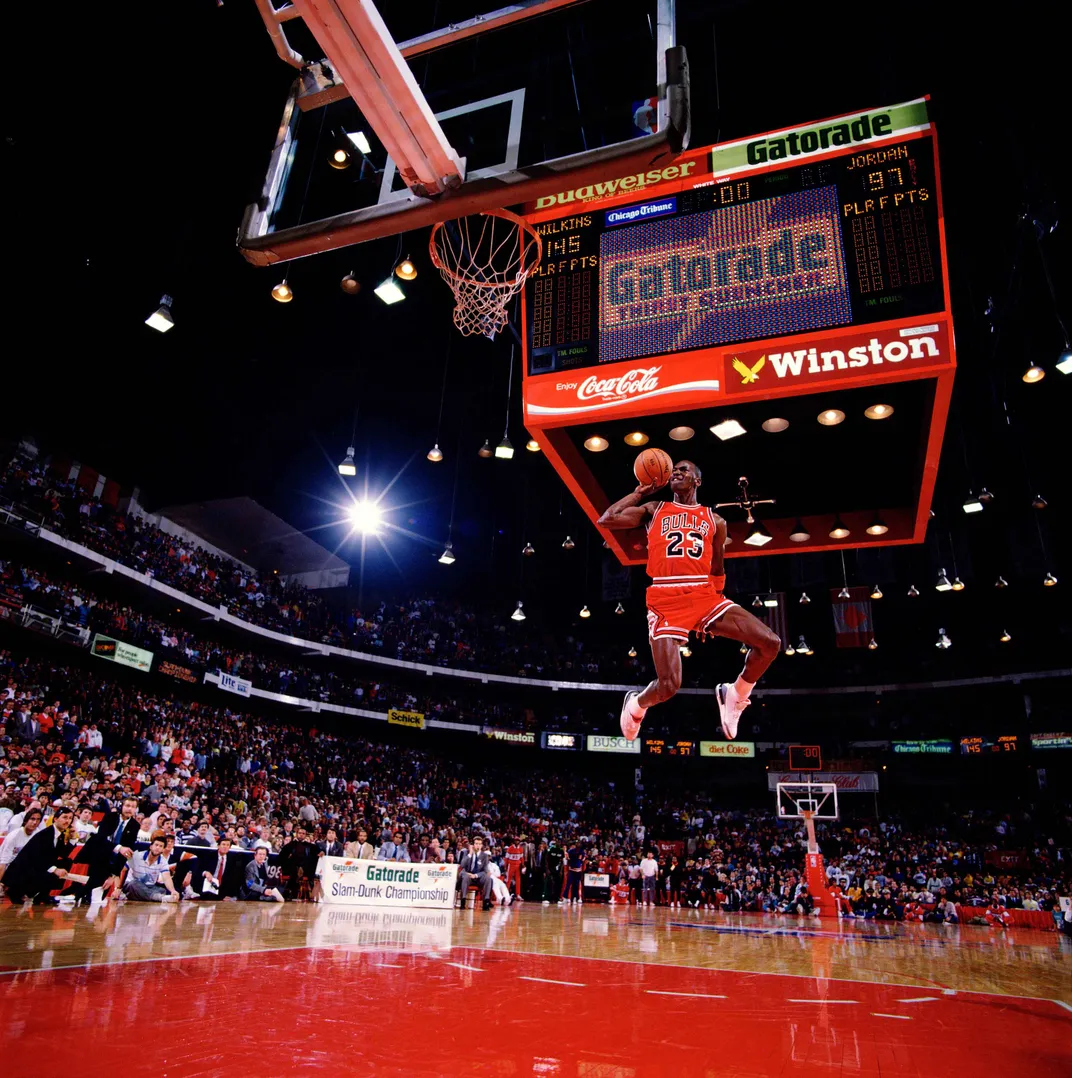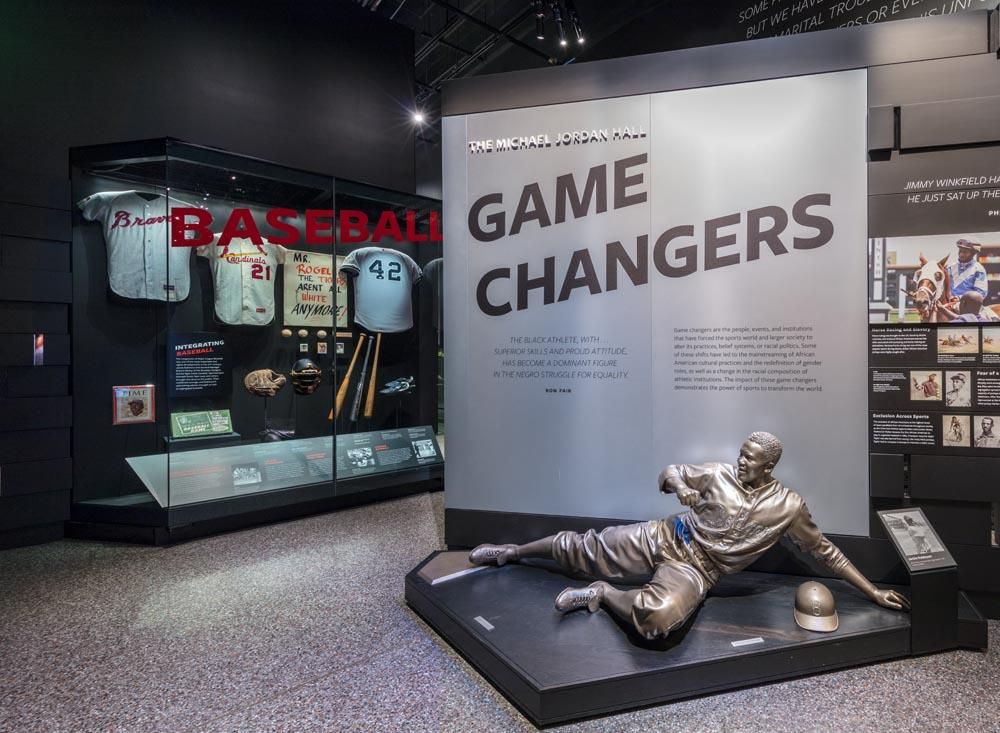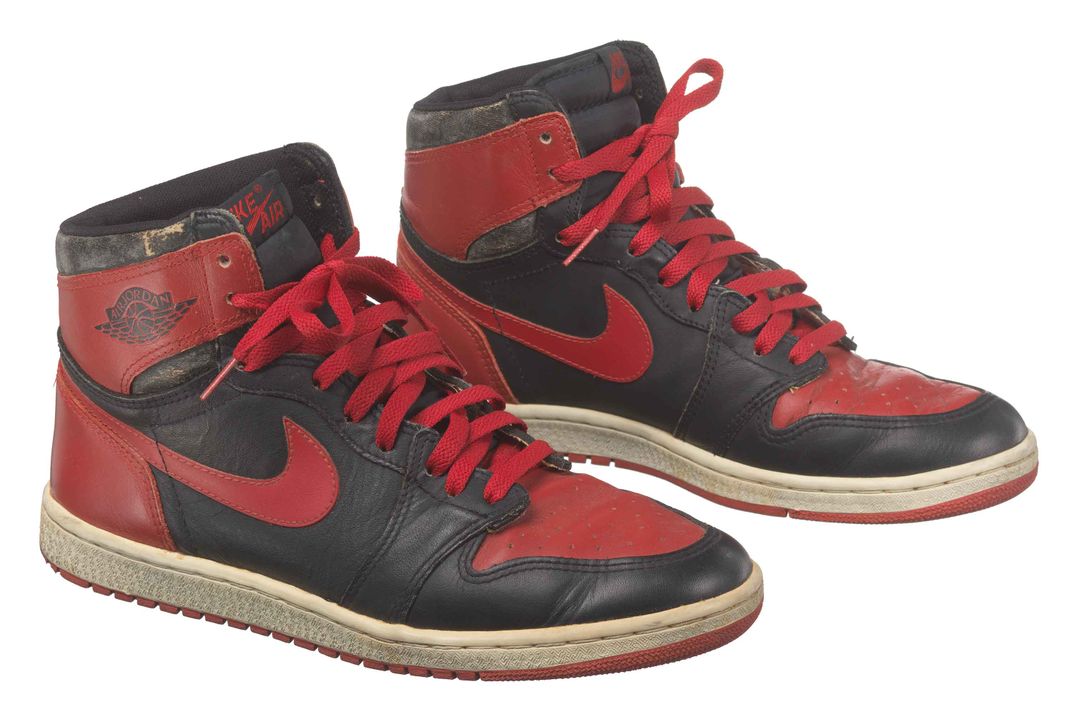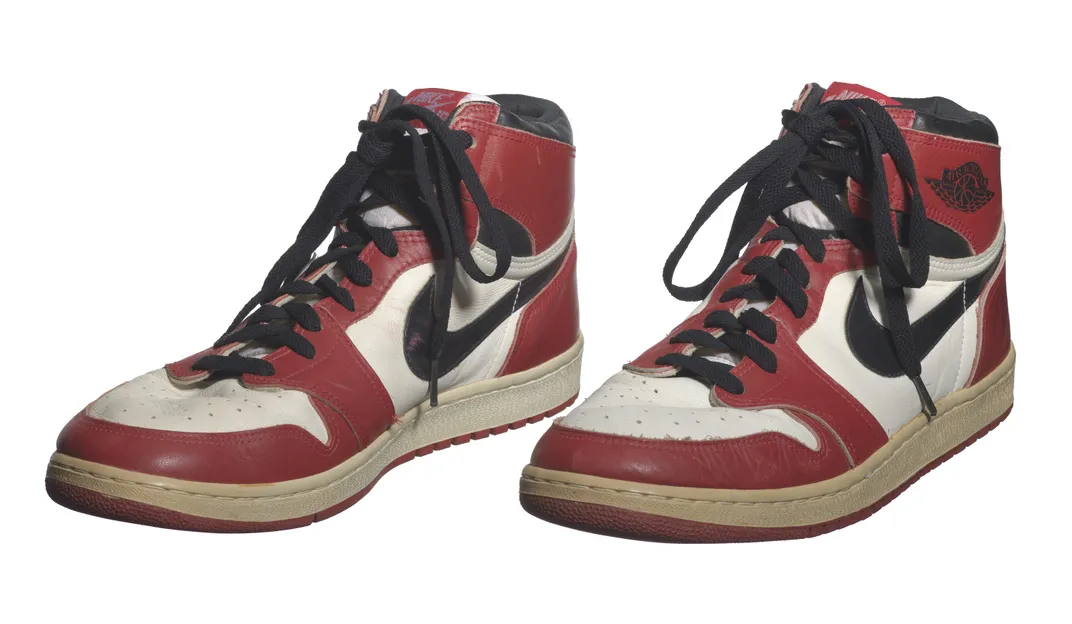A Smithsonian Curator Reevaluates the Incredible Legacy of Michael Jordan
Historian Damion Thomas speaks about what made the NBA All-Star ‘brilliant’
/https://tf-cmsv2-smithsonianmag-media.s3.amazonaws.com/filer/e3/93/e393bd69-f730-4052-a60c-057c3d94411d/2016_164_15_001.jpg)
On Sunday night, “The Last Dance,” the ten-part ESPN documentary about Michael Jordan and the 1997-98 Chicago Bulls came to an end. For basketball fans, given there is no basketball to speak of, it’s been a hugely popular gift. Praised by most, criticized by a few, it’s allowed Gen-X fans to relive their younger days while introducing their kids to the utter brilliance of Jordan, the steady hand and smothering defense of Scottie Pippen, and the feather boas and insane rebounding instincts of Dennis Rodman. Even non-NBA fans were able to enjoy America’s favorite pastime, “try and figure out what the deal is with MJ’s whiskey glass?”
Also on Sunday, “Michael Jordan: A Re-evaluation,” a virtual discussion produced by the Smithsonian Affiliations, was held with Damion Thomas, a sports curator at the National Museum of African American History and Culture, discussing the basketball genius, who became one of the most recognized people on Earth. (And beyond!)
Thomas spoke with Smithsonian about Jordan’s role in changing perceptions of African Americans, his rookie year kicks, and the true meaning of hang time.
What was your relationship to Michael Jordan growing up?
I'm in my mid-40s, so I’ve been watching Jordan play basketball since he was at the University of North Carolina. I’m a Lakers fan, so I definitely remember the 1991 Finals.
I’m a Magic Johnson guy, but that certainly didn’t keep me from recognizing the brilliance of [Jordan]. I break his career into two distinct junctures, the early years when he’s making his case as best player in the NBA, and the 1990s where he breaks through, becomes a championship player and cements his greatness. Jordan, Magic and Larry Bird are reflective of a fundamental shift in basketball, where the sport moves from the center position being the dominant position to the wings. It was a new era.
Your talk is subtitled “A Re-evaluation.” What are you re-evaluating about Jordan?
Historians don't tend to write about things until 20 to 25 years after the fact. What happens is people like Michael Jordan get crystallized in a moment of time, and years later, historians come in with the ability to look at the aftermath and to contextualize these moments in a bigger context. So when I say re-evaluate, it’s a question of how do we think of Michael Jordan today as opposed to during his playing career?
How do you see him differently from his days as a player?
In many ways, his perception as a player hasn't really changed. The way you re-evaluate Michael Jordan is to view him as more than an individual, as part of a shift in history. One of the most important ways to think about Michael Jordan is as a representative of the post-civil rights generation, which has often been undefined. He was born in 1963, came of age in the late 1970s and early 1980s. It’s important to look at that generation’s contribution to the African American struggle. Jordan wasn’t protesting in the streets, so a lot of times the contributions of that era aren’t seen as significant or valuable. For African Americans born in the 1960s through the early 90s, the objective was to integrate, to take advantage of all the doors that were open because of the civil rights movement. With that notion as the backdrop, Jordan did incredibly well. He transformed advertising and marketing.
People didn’t think a 6’6'' bald-headed, dark-skinned, muscular African American could become one of the most recognizable faces in American society. He created a situation for athletes, particularly black athletes, where your brand could be bigger than your accomplishments on the court or field.

Jordan has long been derided in progressive circles for the infamous “Republicans buy sneakers, too” line regarding the 1996 North Carolina Senate race between Jesse Helms and Harvey Gantt, do you think the criticism is fair?
It’s interesting you mention that quote, which came from a Sam Smith book, because to my knowledge, Michael Jordan never addressed it until this documentary. He admits saying it on the team bus, but says it was in jest, not a serious comment because he has no intention of getting involved in the Senate race. It’s an important moment because it shows Jordan wasn’t craven, he just didn’t fight political battles. It wasn’t how he chose to be an advocate for African Americans, of which there are many strategies.
What do you think of Ken Burns’ criticism that having Michael Jordan’s production company as partners in the “Last Dance” hurts its credibility as a historical narrative?
All storytellers have perspectives and nobody has a claim to the truth. One of the great things about this documentary is that it opens up questions that have been dormant for a while, or that people hadn't considered and engaged with at all. “The Last Dance” creates an opportunity to build new conversations around the famous last names. It’s trying to make sense of who Michael Jordan is. I don’t think his involvement should discredit the work put into making the documentary, but no one sphere has the final say. Just because it’s a ten-part series doesn’t mean there aren’t other perspectives to be explored.
As Mars Blackmon said, “it’s gotta be the shoes,” tell us about the two pairs on view at the museum.
The first pair is the 1985 “Notorious” Air Jordan I, in all black-and-red. . .
MJ wasn’t allowed to wear those in the NBA, which I remember thanks to a classic David Letterman bit…
Yes, at the time, the league had a rule that sneakers had to be majority white, and accent colors from your team could be added. The shoes violated the dress code, but we also have on display a pair of Air Jordan I high tops he wore that season. Mike needs to come through and take a tour.
How big was Jordan’s impact in terms of style and swagger?
His personal style of play was reflective of the African American style of play. It's one-on-one, flashy, and flamboyant, but at the same time he is an incredible team player. It evolved from his rookie season, but by the end of his career he was willing to do whatever it took to win. It’s a testament to his skills and abilities as a teammate. Some players who came after Jordan only emulated the first part.
Is there a takeaway from “The Last Dance,” something you hadn’t considered before, an actual re-evaluation of Michael Jordan or his Bulls teams?
The documentary brought home how truly chaotic the ’98 season was, a team knowing a basketball dynasty could be destroyed for no reason and still getting after it every night. Even understanding the NBA is a business, it makes no sense the Bulls weren’t allowed to continue defending their titles. Competing interests can make sports fandom challenging, but to dismantle a team that won six championships in eight years—and might have run the table if Jordan hadn’t stepped away—is a tragedy.
I’d love to get your thoughts on the interrupted up-in-the-air COVID-19 season that should be deep in the playoffs right now.
I was in Kansas City the night Rudy Gobert and Donovan Mitchell tested positive for coronavirus and the NBA shut it all down. It was the moment that made me think of this pandemic differently. It’s amazing how many times sports have been my entry point to see the world in a whole new light. I think that's true of a lot of people, when that NBA announcement came out, it was a catalytic moment for a lot of Americans. I’ll remember where I was when I heard the news for the rest of my life.
And as a Los Angeles Lakers fan. . . It was looking really interesting. There was a good chance they would’ve played the Los Angeles Clippers in the Western Conference Finals, which would have been a heck of a fight. I hope they can finish out the season in some form or another.
Lastly, is there one particular basketball moment from Michael Jordan's career that always sticks with you?
It's a hodgepodge of plays, but he had a singular ability that distinguished him from all the other incredibly talented basketball players that always come to mind. Coaches teach players to shoot at the highest point, to consistently let it fly at the apex of your jump. Michael Jordan could leap with the best of them, of course, but he also held onto the ball and scored with accuracy on the way down. People called it hang time, but the incredible skill was actually getting shots up on his descent. It wasn’t a fluke, he shifted his body while falling to Earth and got buckets. It was unique to Michael Jordan, something I have never seen another player consistently do.

/https://tf-cmsv2-smithsonianmag-media.s3.amazonaws.com/accounts/headshot/IMG_2851_thumbnail_copy.png)




/https://tf-cmsv2-smithsonianmag-media.s3.amazonaws.com/accounts/headshot/IMG_2851_thumbnail_copy.png)